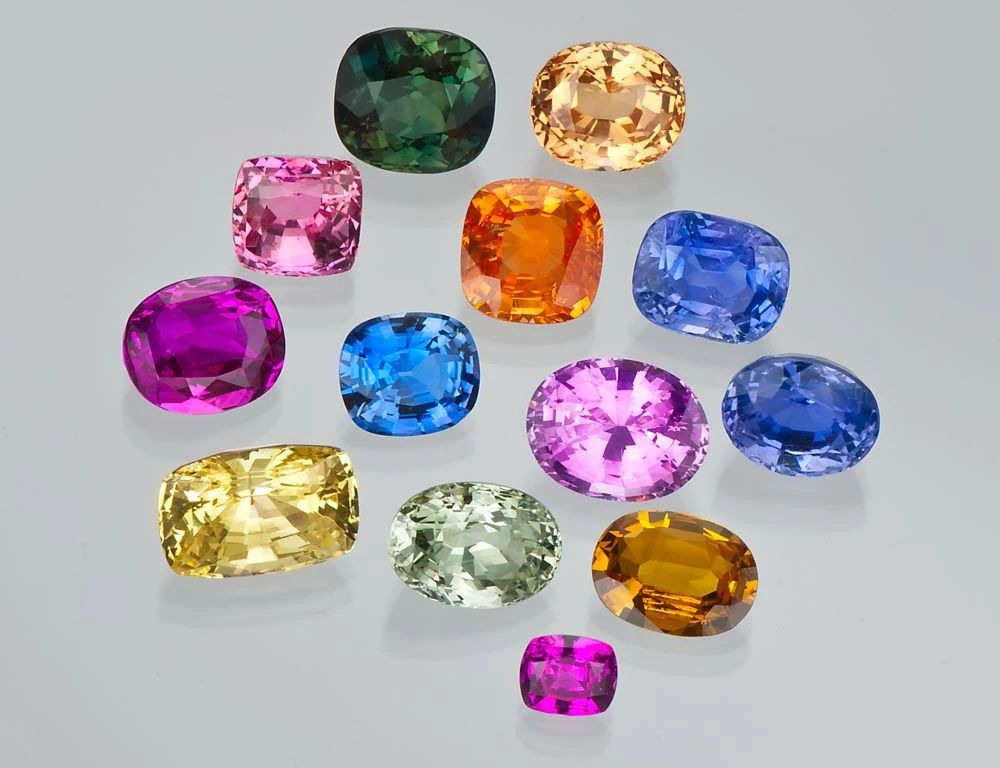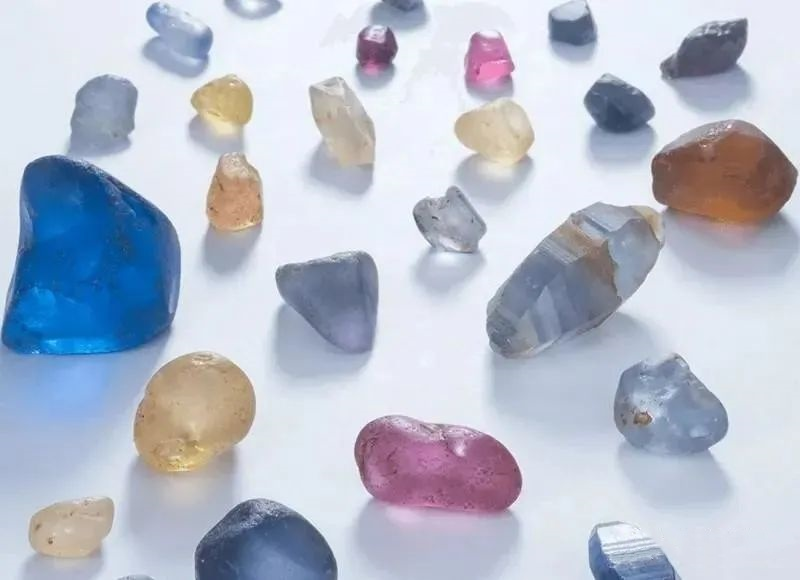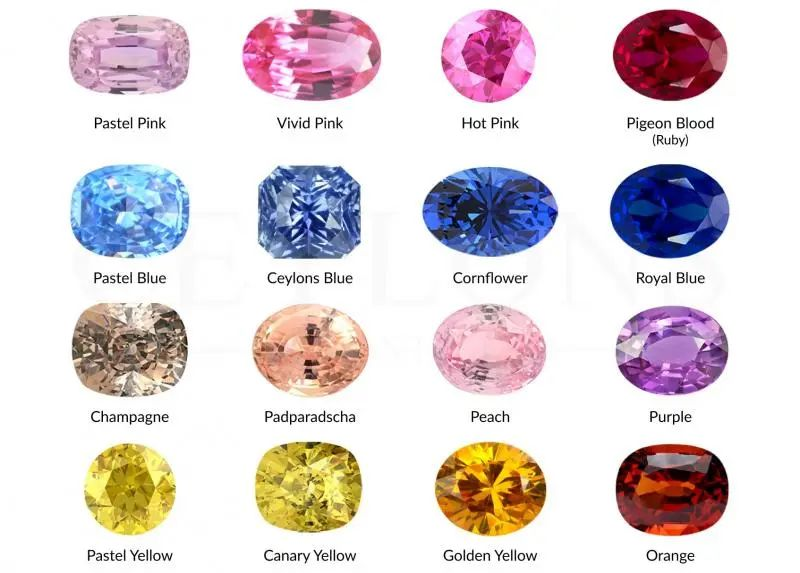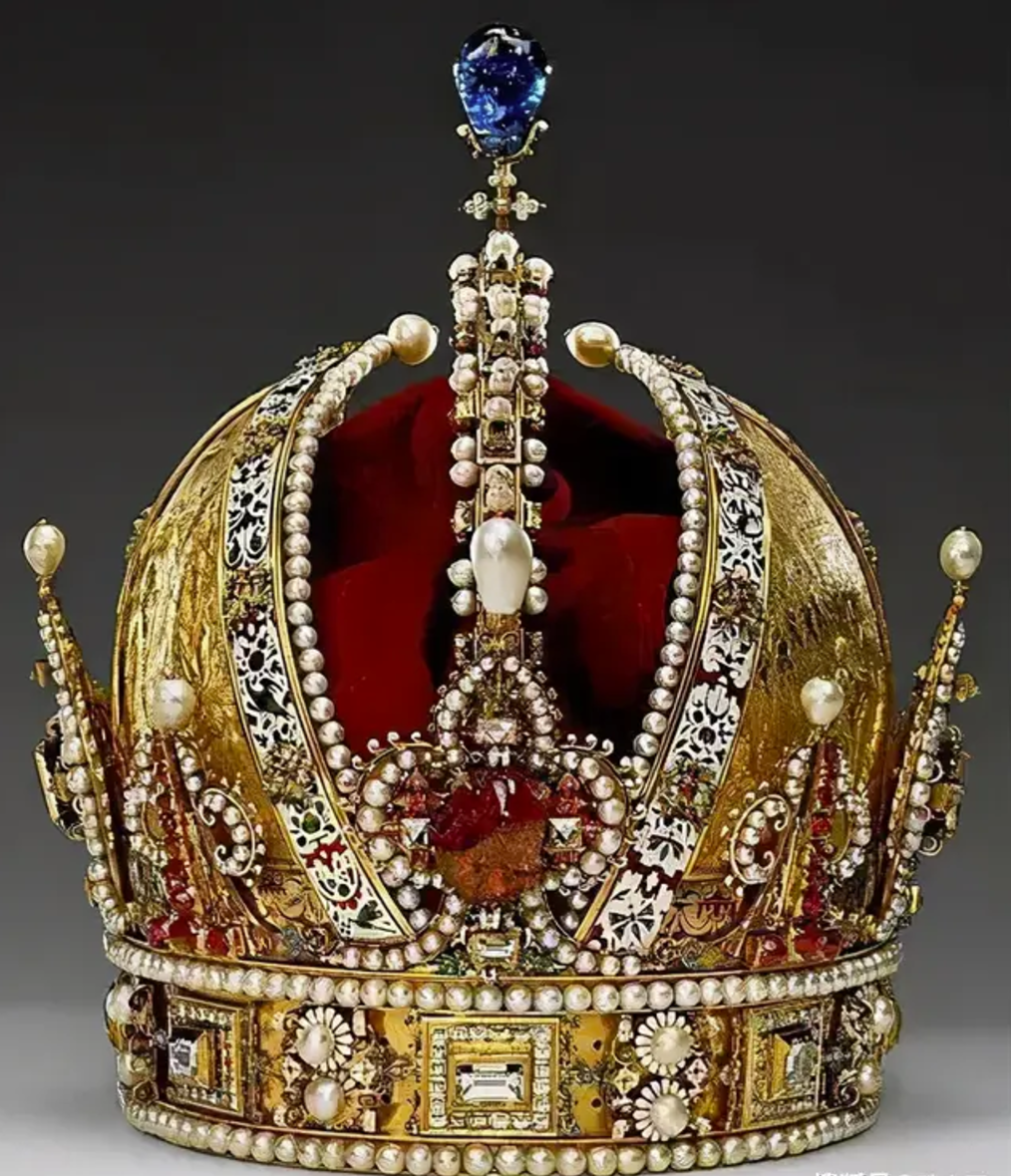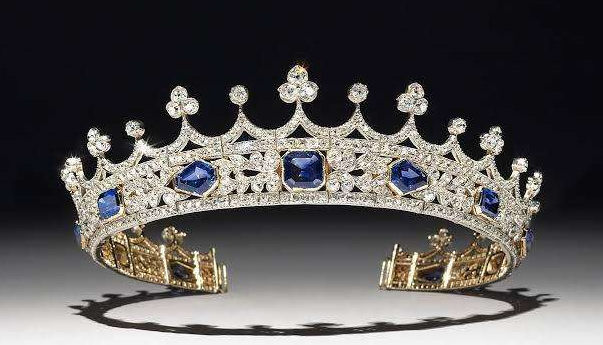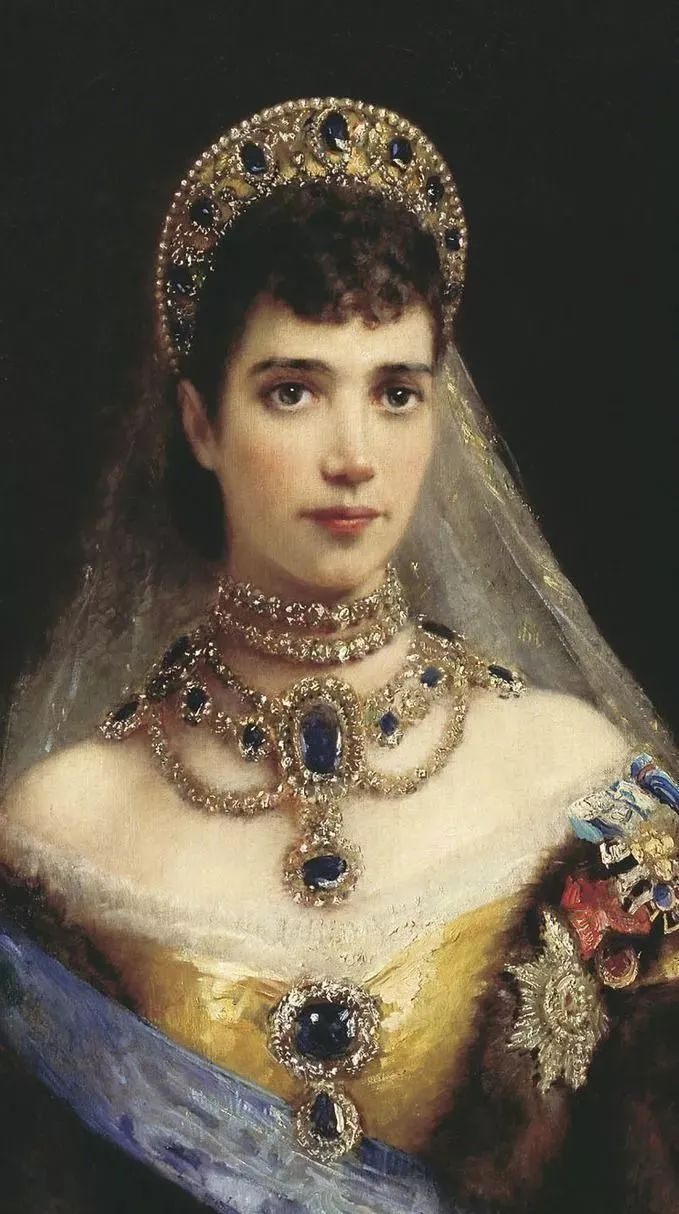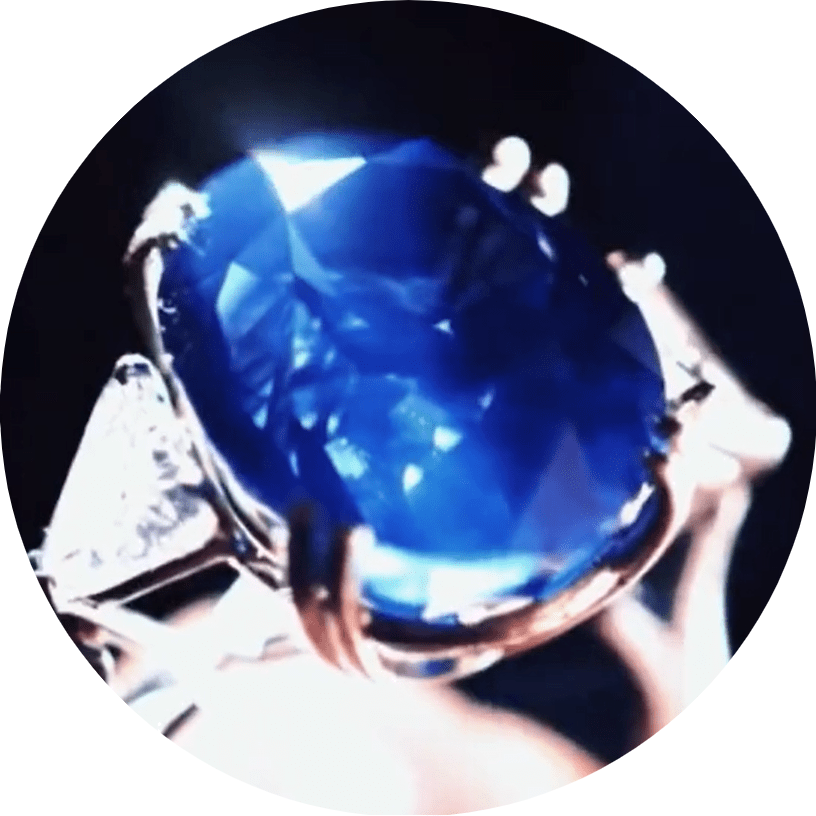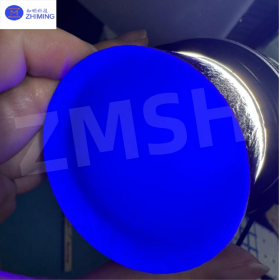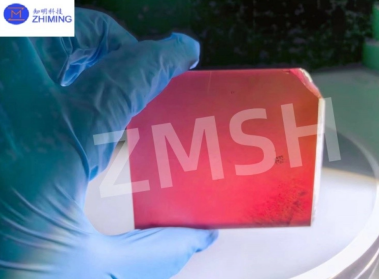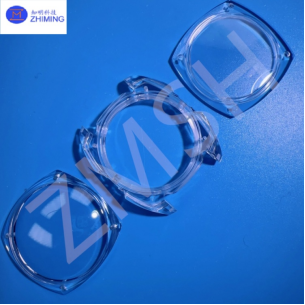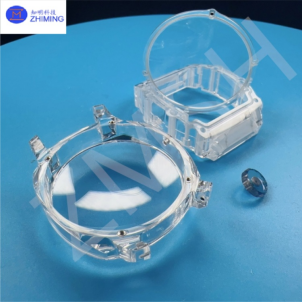Sapphire, the “top star” of the Corundum family, is like a refined young man in a “deep blue suit”. But after meeting him many times, you will find that his wardrobe is not just “blue”, nor just “deep blue”. From “cornflower blue” to “royal blue”, each kind of blue is dazzling. When you think the blue is a bit monotonous, It will show you green, grey, yellow, orange, purple, pink and brown again.
Sapphire of different colors
Sapphire
Chemical composition: Al₂O₃ \ nColor: The color change of sapphire is the result of the substitution of different elements within its lattice. Including all the colors of the corundum family except ruby. Hardness: The Mohs hardness is 9, second only to diamond. Density: 3.95-4.1 grams per cubic centimeter \ nBirefractive index: 0.008-0.010 \ nLuster: Transparent to semi-transparent, vitreous luster to sub-diamond luster. Special optical effect: Some sapphires have a starlight effect. That is, after arc-shaped cutting and grinding, the fine inclusions inside (such as rutile) reflect light, causing the top of the gemstone to show six starlight rays.
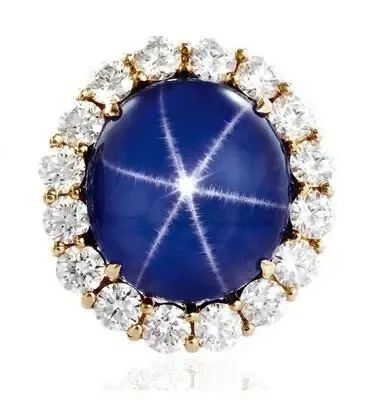
Six-shot Starlight Sapphire
Main production areas
Famous production areas include Madagascar, Sri Lanka, Myanmar, Australia, India and parts of Africa.
Sapphires from different origins have distinct characteristics. For instance, sapphires produced in Myanmar, Kashmir and other regions are colored with titanium, presenting a bright blue color, while those from Australia, Thailand and China are colored with iron, resulting in a darker color.
Genesis of the deposit
The formation of sapphire is a complex process, usually under specific geological conditions.
Metamorphic cause: When magnesium-rich rocks (such as marble) come into contact with titanium/iron-rich fluids, corundum is born under a pressure of 6-12kbar at 700-900℃. The “velvet effect” inclusions of Kashmir sapphire are precisely the “signature” of this high-pressure environment.
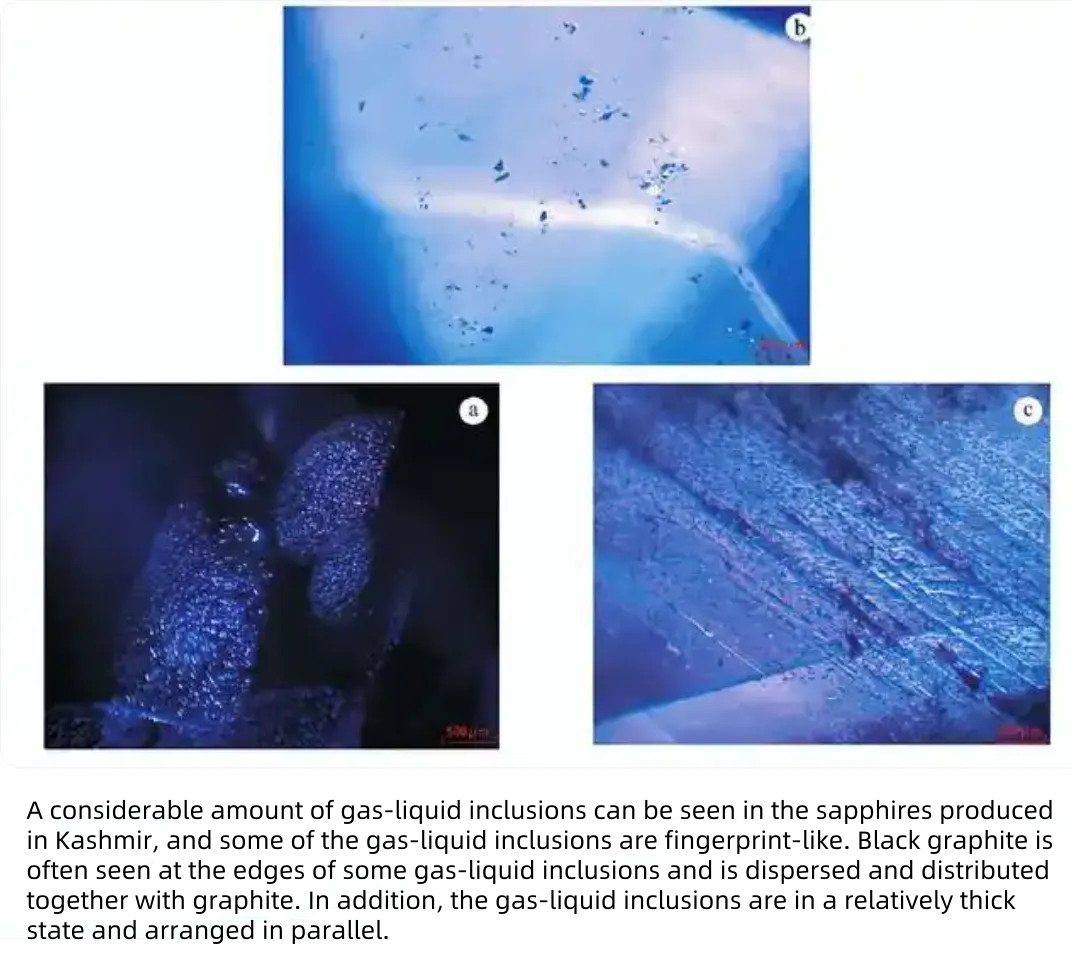
Magmatic genesis: Basaltic magma carrying corundum crystals erupts to the surface, forming deposits such as Mogu in Myanmar. The sapphires here often contain rutiite inclusions, arranged in a “starlight” pattern.
The characteristic arrow-shaped rutile inclusions in Mogok sapphires from Myanmar
Pegmatite type: The placer sapphires from Sri Lanka are the “legacy” of the weathering of granitic pegmatite.
Sri Lankan placer sapphire rough stone
Value and Use
The uses and applications of sapphire span across fields such as jewelry, science, education and artistic expression.
Gemstone value: Sapphire is highly praised for its beautiful color, high hardness and durability, and is often used to make high-end jewelry such as rings, necklaces, earrings and bracelets.
Sapphires of different colors and chromic ions
Symbolic meaning: Sapphire symbolizes loyalty, constancy, kindness and honesty, and is the birthstone for September and autumn.
Industrial uses: Besides being used as a gemstone, sapphire is also employed in the production of crystal glass for watches and window materials for optical instruments due to its high hardness and transparecy.
Synthetic sapphire
Synthetic sapphire is manufactured in the laboratory, but its chemical, optical and physical properties are almost the same as those of natural minerals.
The history of synthesizing/processing sapphire
In 1045, corundum gemstones were treated at a temperature of 1100°C to remove the blue hue of rubies.
In 1902, the first artificially synthesized corundum was produced by the French chemist Auguste Verneuil (1856-1913) using the flame melting method in 1902.
In 1975, the geuda sapphire from Sri Lanka was heated at a high temperature (1500°C+) to turn it blue.
In the summer of 2003, GIA published an important new study on beryllium diffusion in rubies and sapphires.
Does the Crown have a special fondness for sapphires?
Austrian Crown
The skeleton is made of gold and inlaid with pearls, diamonds and rubies. At the center of the crown’s top is an extremely dazzling sapphire.
Queen Victoria Sapphire and Diamond Crown
The entire crown is made of gold and silver, with a width of 11.5 centimeters. It is set with 11 cushion-shaped and kite-shaped cut sapphires and decorated with bright old mine-cut diamonds. This was a gift that Prince Albert gave to the Queen the day before his wedding in 1840.
The Crown of the British Empire
This crown is set with 5 rubies, 17 sapphires, 11 emeralds, 269 pearls and 2,868 diamonds of various sizes.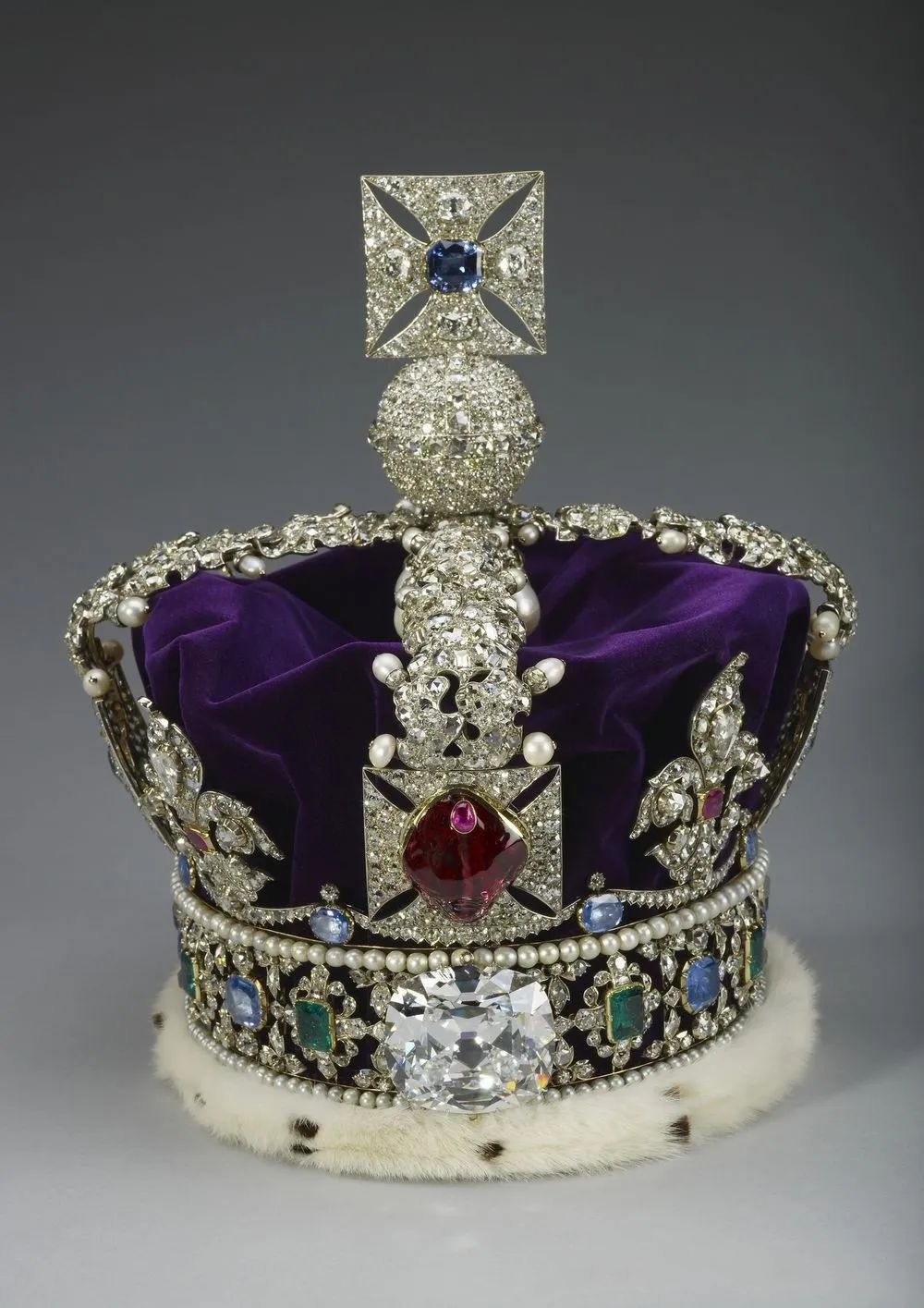
The sapphire of Empress Maria of Tsarist Russia
The Russian painter Konstantin Makovsky once painted a portrait of Maria. In the painting, Maria is dressed in splendid attire and wears a complete set of extremely luxurious sapphire suits. Among them, the necklace in front of her neck is the most eye-catching, set with an oval sapphire weighing 139 carats.
Sapphire is indeed very beautiful. It’s not impossible to own one. After all, the price can vary greatly depending on color, clarity, cutting technique, weight, origin and whether it has been optimized or not. Please be vigilant when purchasing. After all, it is a symbol of “loyalty and wisdom”. Don’t be swayed by that “starlight”.
XKH’s Synthetic sapphire rough stone material:
XKH’s Sapphire watch case:
Post time: May-12-2025

